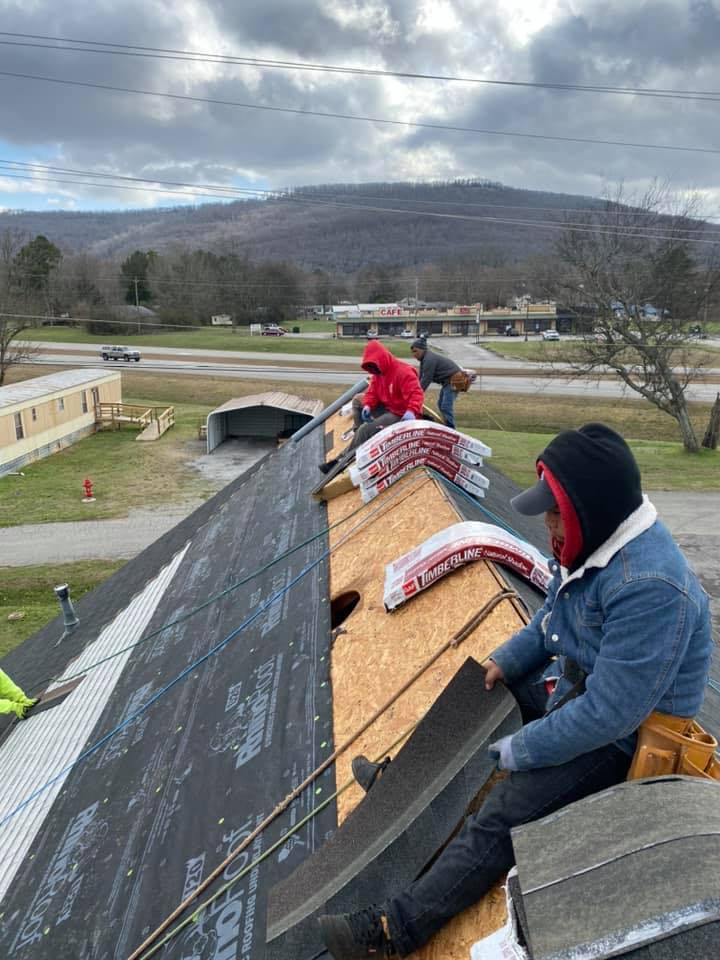Innovations in Siding Installation
The siding installation sector has traditionally been seen as slow to innovate, relying heavily on tried-and-true methods. However, recent technological advancements and materials science breakthroughs are transforming the industry. This article aims to provide a detailed overview of these innovations and how they are shaping the future of siding installation, all courtesy of insights from HV Roofing and Construction.
High-Performance Composite Materials
One of the most significant advancements in siding installation is the development of high-performance composite materials. These composites offer several advantages over traditional materials such as wood, vinyl, and aluminum.Benefits of Composite Materials
- Durability: Composite materials are highly resistant to weathering, UV radiation, and pest infestations.
- Low Maintenance: These materials require minimal upkeep compared to traditional options.
- Sustainability: Many composites are made from recycled materials, reducing their environmental impact.
| Composite Material | Traditional Material |
|---|---|
| High durability | Moderate durability |
| Low maintenance | High maintenance |
| Sustainable | Often not sustainable |
Smart Siding Technology
Another exciting development is the integration of smart technology into siding materials. Smart sidings can perform various functions, like monitoring the structural integrity of a building.Smart Technology Features
- Temperature Regulation: Some smart sidings are designed to adapt to changing temperatures, providing better insulation.
- Structural Monitoring: Sensors embedded in the siding can send alerts if there are issues like water ingress or structural weaknesses.
- Energy Efficiency: By regulating temperature and reducing energy needs, smart sidings contribute to lower utility bills.
Advanced Installation Techniques
Innovations are not limited to materials alone; new installation techniques are also gaining popularity. These techniques aim to simplify the installation process and improve the overall quality of the work.Prefabricated Panels
One game-changing development is the introduction of prefabricated siding panels. These panels are fabricated in controlled environments and then brought to the construction site for assembly.- Speed: Prefabricated panels significantly reduce installation time.
- Quality Control: Fabrication in controlled environments ensures higher quality.
- Cost-Effective: Reduced labor time translates to cost savings.
The Role of Robotics
The incorporation of robotics in siding installation is another groundbreaking innovation. These automated systems can perform various tasks with high precision, reducing human error and increasing efficiency.Types of Robotics Used
- Installation Robots: These robots handle the actual placement and fastening of the siding panels.
- Inspection Robots: Utilized for post-installation inspections, these robots ensure the quality and integrity of the siding.
- Maintenance Robots: Designed to handle routine maintenance tasks, reducing the need for human intervention.
UV Resistant Coatings
UV radiation is one of the primary causes of siding material degradation. Innovations in UV-resistant coatings are now providing a much-needed solution to this problem.Benefits of UV Resistant Coatings
- Longevity: Extends the lifespan of siding materials.
- Color Retention: Prevents fading and discoloration.
- Enhanced Protection: Provides an additional layer of protection against environmental elements.
Fire-Resistant Siding
Fire safety is a critical consideration in construction. Recent advancements have led to the development of fire-resistant siding materials, which are becoming increasingly popular.Fire-Resistant Siding Types
- Fiber Cement: Consists of cement, sand, and cellulose fibers, offering excellent fire-resistant properties.
- Metal Siding: Particularly aluminum and steel, are non-combustible and provide a high level of fire resistance.
- Treated Wood: Wood treated with fire-retardant chemicals to enhance its fire resistance.
Energy-Efficient Siding
With increasing focus on sustainability, energy-efficient siding options are gaining traction. These materials help in reducing energy consumption and lowering the carbon footprint of buildings.Types of Energy-Efficient Siding
- Insulated Vinyl: Features a layer of foam insulation that improves energy efficiency.
- Thermal Wood: Treated to enhance its insulative properties while retaining the aesthetic appeal of traditional wood siding.
- Reflective Metal: Metals treated to reflect more sunlight, thereby keeping buildings cooler.
Sustainable Practices in Siding Installation
Sustainability is no longer a buzzword; it is a necessity in today’s construction industry. Innovations in siding materials and installation techniques are focusing more on eco-friendly practices.Sustainable Material Options
- Recycled Materials: Using materials made from recycled content can significantly reduce environmental impact.
- Biodegradable Options: Materials that decompose naturally reduce waste.
- Locally Sourced Materials: Reducing transportation emissions by using locally sourced materials.
Sustainable Installation Techniques
- Minimal Waste: Advanced techniques generate less waste during installation.
- Renewable Energy: Using renewable energy sources for on-site activities.
- Water Conservation: Techniques that minimize water usage during installation.
The Future of Siding Installation
The future of siding installation looks promising with continuous innovations and technological advancements. The industry is moving towards more efficient, durable, and sustainable practices.Predicted Trends
- Increased Automation: More reliance on robotics and automated systems.
- Better Integration of Smart Technologies: Enhanced use of smart sidings for maintenance and monitoring.
- Continued Focus on Sustainability: More eco-friendly materials and practices becoming standard.
Challenges and Opportunities
While these innovations bring numerous benefits, they also pose certain challenges.Challenges
- Initial Costs: Advanced materials and technologies come with higher upfront costs.
- Skilled Labor: Need for skilled labor to handle new technologies and materials.
- Regulatory Approvals: New materials and technologies must meet regulatory standards, which can be time-consuming.
Opportunities
- Market Leadership: Companies that adopt these innovations can position themselves as market leaders.
- Cost Savings: Long-term savings in maintenance and energy costs.
- Customer Satisfaction: Higher quality and more sustainable options increase customer satisfaction.
Looking forward
Innovations in siding installation are revolutionizing the construction industry, offering new materials, advanced technologies, and sustainable practices. HV Roofing and Construction remains at the forefront of these changes, providing cutting-edge solutions in siding installation. By embracing these advancements, you can ensure that your projects are more durable, energy-efficient, and environmentally friendly. The future of siding installation is bright, and with continued innovation, the possibilities are limitless.Share this post :
Latest Post
Categories

